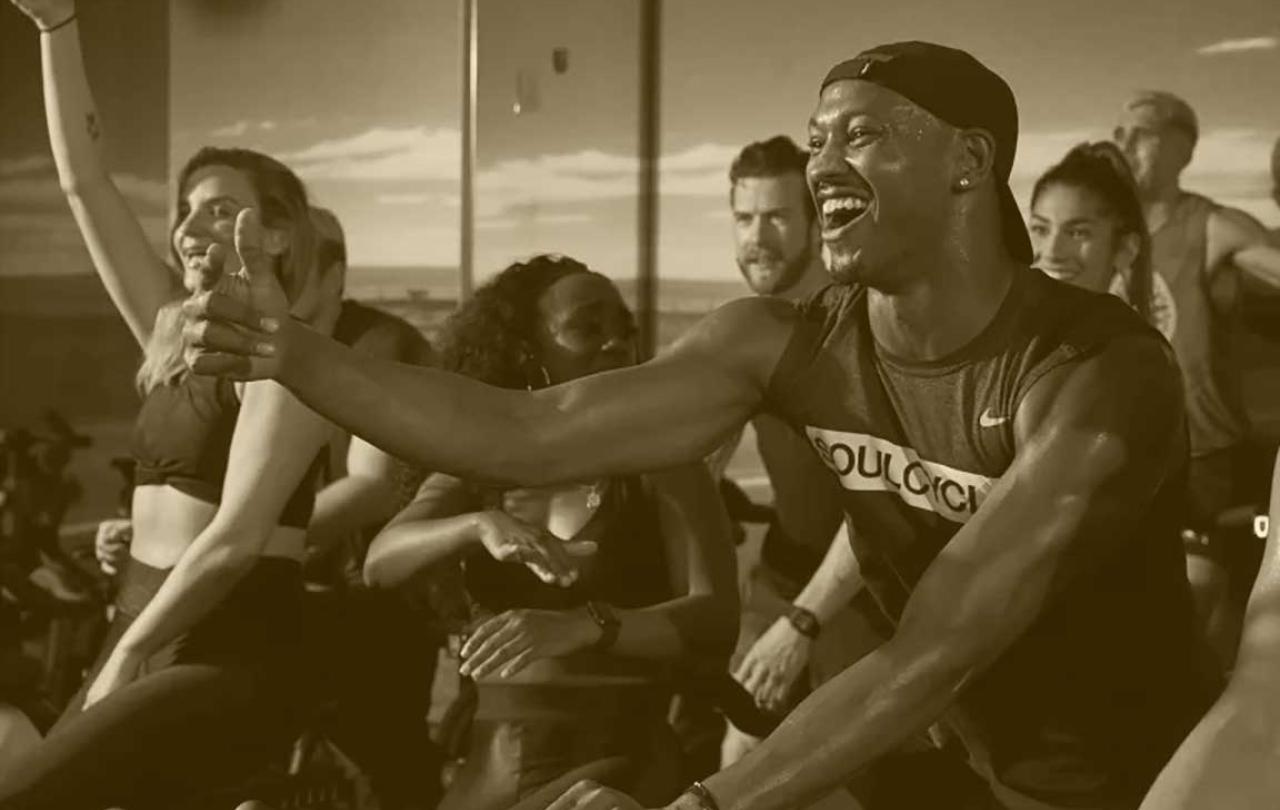
Last year, I learnt an important lesson: cycling and spin classes are not the same thing.
Of course, they both take place on bikes – one moving, one stationary. And they are both exercise. But the similarities stop there.
Let me explain.
I’m a cyclist – and a smug one at that. My cycle commute to work, three times a week, comes to a round trip total of about 15 miles.
So, when I was invited last summer to take part in a SoulCycle class in aid of a charity I care deeply about, I jumped at the chance. How hard could it be? I can ride a bike. My cardio-vascular fitness is above average. It’ll be an easy way to raise awareness of the charity, and maybe have some fun in the process.
How wrong I was.
My first clue that a SoulCycle class wouldn’t be like my normal commute was found on my visit to its website. The About Us page informed me that at a SoulCycle class – a ‘sanctuary’ – ‘tears will be shed’ and ‘breakthroughs happen’. The only time I ever cried whilst commuting was when I got my second puncture in a week, three miles from home, in the January rain. And, quite frankly, when you’re dodging taxis and swerving around pedestrians, breakthrough feels a long way off.
And so, I headed off to my SoulCycle class, equipped with my padded shorts and my charity-branded cycling jersey. I arrived, hired my shoes, and headed into the changing rooms. And it was there that I was greeted by the SOUL Etiquette sign:
SOUL Etiquette ‘To preserve soul sanctuary, we have a few simple requests’
No text & chat
No cell phones or communication devices in the studio. If you are a doctor or your child is sick, kindly leave your phone with the front desk and we will get you if there is an emergency
Skip the cross talk
Talking during class is a major distraction for the spiritual folks around you
Laundry
We ride close together so we can feel each others’ energy. That being said, your neighbour does not want to feed off your odor.
Kindness is cool
Respect the rider on your left and your right. Treat the front desk the way you would like them to treat you.
The pack
There is a direct correlation between your energy and your neighbour’s ride. If you want to do your own thing, please don’t ride in the front row.
I was fascinated. What lay ahead of me?
Well, let me tell you: nothing could have prepared me for the class I took.
A dark room, filled with mirrors, motivational quotes and – for some reason – grapefruit scented candles. About 30 stationary bikes, lined up in three rows. An instructor whose enthusiasm knew no bounds.
I took a bike at the back.
Within 10 minutes, I was sweatier than I have ever been, and questioning all my life choices up until that moment. Within 15 minutes, I had removed my charity-branded cycling jersey and drunk half of my bottle of water. There was still 30 minutes to go. I wasn’t sure I was going to make it.
And yet by the end, I was buzzing. Whether it was the endorphins, the sense of community, or the relentless cheerleading of the instructor, I wanted more. It was… remarkable. I very nearly signed up for another class there and then.
From the signs in the changing rooms to the instructors’ soundbites, I was continually told what I could achieve if I tried.
The instructor – a bouncy brunette whose name I can’t remember – led the class with an exuberance that I am yet to see anywhere else. At one point, she got off her bike and danced up and down the aisle in front of the class. Quietly rasping for air at the back, I had no idea how she had the energy to speak whilst pedaling, let alone dance.
The thing that I found most fascinating about my SoulCycle class, though, was the ‘spiritual’ aspect. From the signs in the changing rooms to the instructors’ soundbites, I was continually told what I could achieve if I tried. That the ability to breakthrough my problems, to succeed, to achieve my dreams, was all held within me – I just needed to dig a little deeper, peddle a little harder, put my mind to it.
At one point, the instructor made us repeat after her: ‘I can do all things…’ it was there that she paused. As someone who grew up in the church, learning memory verses of Scripture week after week, I immediately wanted to yell ‘through Christ who strengthens me!’, but instead was encouraged to complete the sentence with something (I can’t remember exactly what) about my own abilities and force of will.
The whole class was deeply motivating. I left feeling like, quite frankly, I could achieve anything.
Thing is, though, I’m an able-bodied, middle class, professional, white woman. I come from a two-parent family, and I’m happily married to a non-abusive partner. I have a stable income. Although some of these things are because of the work that I’ve done or choices that I’ve made, many of them are an accident of birth. The odds are – for the most part – stacked in my favour. The very fact that I would have been able to afford to attend this class if I’d wanted to (new riders pay £16 for their first class, and £26 per class from then on) shows a level of privilege that was seemingly completely overlooked.
When things are working in your favour, it’s easy to assume that it’s because you’re the one doing something right. That was the philosophy that was shouted in catch phrases from the front – you can do it, just try a little harder.
Breakthrough is on the other side of this spin class. Mind over matter. That’s the message of SoulCycle.
But every life philosophy, every ‘spiritual experience’, has a flip side to it.
But the problem with that philosophy, of course, is its flip side: if things go wrong – if you’re in an accident, if you get made redundant, if you lose your house or your health fails you – then, logic dictates, it must be that you’ve done something wrong.
If you can no longer afford a SoulCycle class, it’s because you didn’t try hard enough, or you didn’t peddle fast enough, or you didn’t put your mind to it.
Of course, this was never said during the class – it was far too positive for that. But every life philosophy, every ‘spiritual experience’, has a flip side to it. If everything happens for a reason, then sudden seemingly random acts of cruelty – cancer, the death of children, natural disasters – must be there to teach us something. If we can control the good things in our lives – the promotions, the achievements, the relationships – then if stuff goes wrong then it must be our fault as well.
Is that really true?
Human beings are relentlessly fickle. And we have a deep and overwhelming desire to think that we’re in control, that life is in our hands. And it’s comforting – when things are going well. But what when they aren’t?
In her book Everything Happens for a Reason: And Other Lies I’ve Loved, professor of the history of Christianity and Stage 4 cancer patient Kate Bowler writes that ‘control is a drug, and we’re all hooked’.
I can see how SoulCycle could get addictive. In fact, the day I was there, someone was celebrating their 750th ride at SoulCycle London. The endorphins, the encouragement, the relentless pursuit of ‘breakthrough’ and ‘growth’ and ‘progress’ – it’s intoxicating.
When you grow up in the church, you learn a different way of existing. It’s not that you can do all things through yourself, but – as aforementioned – through Christ who strengthens you. The idea of relying on something outside of yourself, something all-powerful, all-loving, is one of the ideas at the heart of Christianity. It’s less of an emotional crutch, and more of a ‘catch-all’ reality for those of us who have realised that we’re not as in control as we once thought, or as we would like to be.





